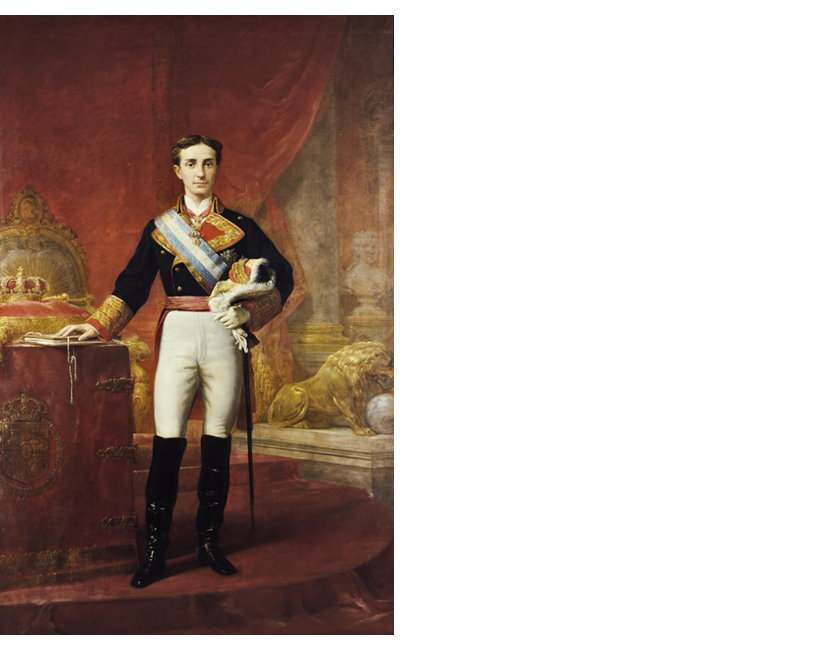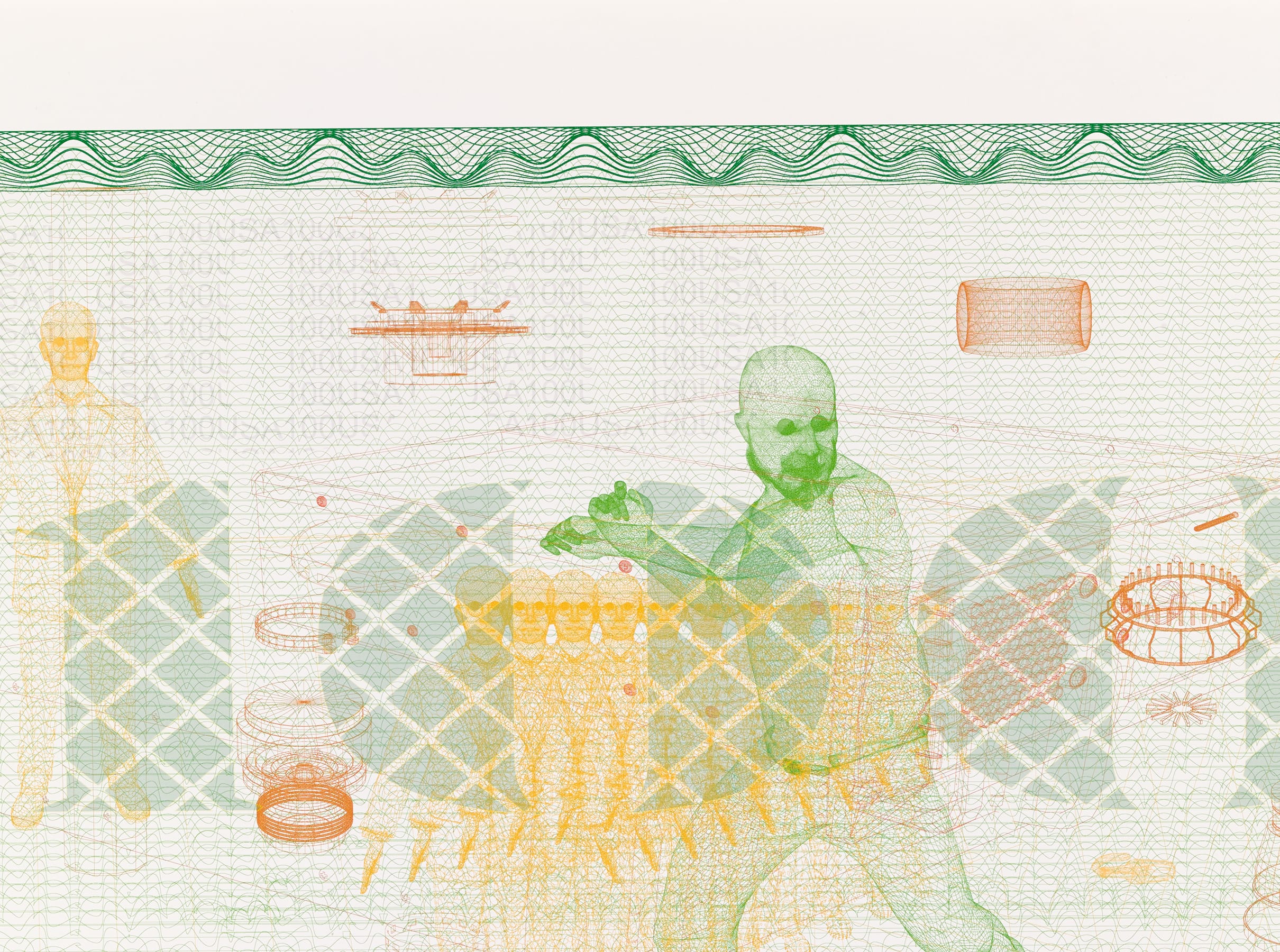
A portrait of José Echegaray by Sorolla and another of Alfonso XII by Carlos Luis de Ribera feature in the exhibition 'The Architecture of Eduardo de Adaro and the Banco de España'
The exhibition on Eduardo de Adaro, chief designer of the Banco de España's headquarters on Plaza de Cibeles and one of the leading architects of the late 19th century, includes two paintings from the bank's official portrait gallery. The gallery forms a major part of the artistic heritage amassed in over 200 years since the institution’s foundation. The portraits are of King Alfonso XII and José de Echegaray, two men who played major institutional roles in the building of the new headquarters building. They were painted by Carlos Luis de Ribera and Joaquín de Sorolla respectively.
 Carlos Luis de Ribera y Fieve. Alfonso XII, 1875. Oil on canvas. Banco de España Collection
Carlos Luis de Ribera y Fieve. Alfonso XII, 1875. Oil on canvas. Banco de España Collection
The bank commissioned Carlos Luis de Ribera to paint this first portrait in 1875[U1] . De Ribera was born in Rome. He specialised in portraits and historical paintings, and earned great renown as a painter of murals for public buildings. The portrait was painted only a few months after the ascension to the throne of Alfonso XII, during whose reign work on the building on Plaza de Cibeles began. The young king is shown uniformed for riding, with a sash, a sword, the insignia of the toison de oro ['golden fleece'] around his neck and the Cross of Charles III on his chest. He is standing with his right hand resting on a table covered in a cloth bearing the Bourbon coat of arms, on which there is a crown, behind which we can just see the top of a throne. In the background there is a statue of a lion, the symbol of the monarchy, and a bust of Isabella II. Esperanza Guillén, joint curator with Yolanda Romero of the exhibition The Architecture of Eduardo de Adaro and the Banco de España. A Changing World, explains that this is "an expression of the continuity of the dynasty that was reinstated with the restoration of the monarchy".
The pose in which Carlos Luis de Ribera painted Alfonso XII and the range of colours, featuring ochres, reds and yellows, are similar to those used in his portrait of Amadeo I of Savoy, also commissioned by the Banco de España. This portrait is a fine example of the efforts made by the Spanish institutions of the time to display pictures intended to turn this foreign-born king (who was to hold the throne for just two years) into a familiar, recognisable figure.
 Joaquín Sorolla. Portrait of José Echegaray (1905) Oil on canvas. Banco de España Collection
Joaquín Sorolla. Portrait of José Echegaray (1905) Oil on canvas. Banco de España Collection
The sitter for the other portrait featured in the exhibition is engineer, politician and writer José de Echegaray, during whose mandate as treasury minster the Banco de España was granted a monopoly on the issuing of bank-notes, making it the country's leading financial institution. It was painted by Joaquín de Sorolla. As discussed in a recent news item marking the centenary of Sorolla’s death, the bank's collection contains another three of his works: Voltaire Telling One of his Stories (1905), The Old Door of Seville Cathedral (1910) and In a Tavern in Zarautz (1910).
Sorolla was commissioned to paint this portrait by the Madrid Casino when José Echegaray was awarded the 1904 Nobel Prize for Literature. It was acquired by the bank in 1953. Valencia-born Sorolla, who began the portrait with sessions from life, shows the smartly-dressed Echegaray smiling, with a cigarette in one hand and a walking stick in the other. Papers or books can be glimpsed on a top hat to his left. This can be seen as a way of highlighting this multi-faceted personage's character as a man of letters. There are two more portraits of him in the bank's collection: a painting by Marceliano Santa María Sedano dated 1902 and a bust by Lorenzo Coullaut Valera produced in 1925. Sorolla's use of a narrow palette of colours does not prevent him from sharply contrasting the black of the sitter's clothes with the continuous beige of the sofa and background, broken only by the direction of the brushstrokes.
The inclusion of these two portraits in the exhibition dedicated to Eduardo de Adaro and his legacy not only highlights the important roles played by Alfonso XII and José de Echegaray in consolidating the Banco de España in the late 19th century but also shows how the gallery of official portraits provides an almost uninterrupted history of the institution from the founding of the Banco de San Carlos in 1782 to the present day. The gallery contains portraits not just of personages directly involved in the management of the bank (directors, governors, treasury ministers, etc.) but also of other institutional figures such as monarchs and politicians. The artists responsible for the portraits include such major names as Francisco de Goya, Vicente López Portaña, Antonio María Esquivel, José Villegas y Cordero, Federico de Madrazo, Ignacio Zuloaga, Joaquín de Sorolla and, more recently, Isabel Quintanilla y Carmen Laffón.
